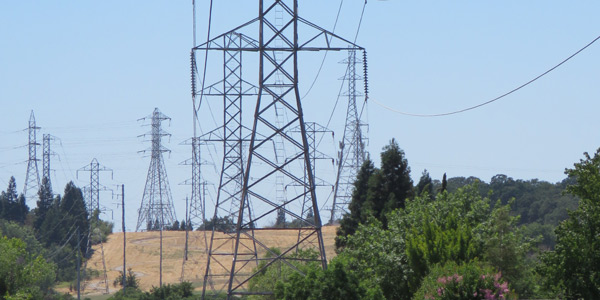The cost of the Greater Boston Project is expected to increase by $191 million (33%) primarily because of the underground Wakefield-Woburn, Mystic-Woburn and Sudbury-Hudson lines, Eversource Energy told the New England Power Pool Reliability Committee on Wednesday.
The cost of the three components is increasing by $147 million, to $352 million (72%).
The remaining 30 components’ cost is rising from $367 million to $411 million, a 12% increase over the transmission cost allocations supported previously by the RC and approved by ISO-NE.
Eversource said 25% of the increase is resulting from the need to underground the 115-kV Sudbury-Hudson line. It was initially proposed as an overhead line, but Eversource was unable to secure property leasing rights from the Massachusetts Bay Transportation Authority (MBTA). The proposed underground line is estimated at $91 million, more than double the original cost of $45.3 million, and has an in-service date of December 2023.
Eversource performed an updated alternative analysis and found that a new 9-mile, 115-kV underground transmission line within an MBTA right of way was the “most cost-effective and constructible alternative.” The two alternatives analyzed — a new 10.3-mile, 115-kV underground transmission line entirely in roadways ($110.4 million), or multiple upgrades to convert a 14.5-mile, 69-kV line to 115 kV, reconductor 11.6 miles of other 115-kV lines and upgrade seven substations ($116.1 million) — had higher costs.
The Wakefield-Woburn and Mystic-Woburn lines are increasing to a combined $260.6 million from $160.2 million, representing 50% of the total cost increase. Eversource said additional restrictions on the design and construction required a realignment of underground construction within roadways to avoid interference with existing utilities. Restrictions on work hours and the number of crews also increased the construction bids, the company said.
The matter is slated for a future committee vote.
ISO-NE, NYISO Propose Revision to Coordination Agreement
ISO-NE proposed revisions to its Coordination Agreement (CA) with NYISO to eliminate the need to make a FERC filing when the grid operators update their description of shared interconnection facilities.
The grid operators share three interconnections: the NY/NE Northern AC Interconnection (comprising the PV-20, K7, K6, E205W, 393, 690/FV and 398 interties); the Norwalk Harbor-Northport, NY, Cable (NNC Intertie) and the Cross-Sound Cable Interconnection (CSC Intertie).
Rather than maintaining the detailed list of interconnection facilities in Schedule A of the CA — which requires a FERC filing for any changes — the grid operators are proposing to update the list on their external websites. The addition or removal of an interconnection would still go through the grid operators’ stakeholder processes and filed with FERC.
ISO-NE said it and NYISO sought the change after the addition of a new transmission substation and common metering point modified one of the interties in the NY/NE Northern AC Interconnection. The change replaced the Pleasant Valley substation and common metering point in New York with the Cricket Valley substation and common metering point on the 398 Intertie.
Although the change did not alter the makeup of the NY/NE Northern AC Interconnection, current rules required that it be filed with FERC. “ISO-NE and the NYISO recognized that such ministerial revisions to the ISO-NE/NYISO CA place an unneeded burden on the respective ISOs, their stakeholders and the FERC,” ISO-NE told the committee.
The grid operators plan to file the revised CA with FERC at the end of 2020 and expect an effective date of early 2021. NYISO will go through a similar stakeholder process, which it expects to complete in November or December, according to ISO-NE.
The RTO requested that the RC vote in support of the proposed modifications at its Oct. 20 meeting.
Tie Benefits and ICR Recommended by Vote
The RC voted to recommend that the Participants Committee support ISO-NE’s tie benefits and installed capacity requirements (ICR) and related values for Forward Capacity Auction 15. (See ISO-NE Sees 722-MW ICR Jump for FCA 15.)
The Hydro-Québec Interconnection Capability Credit (HQICC) values for FCA 15, which is associated with the 2024/25 capacity commitment period, is 883 MW, and the ICR is 34,153 MW with a net ICR of 33,270 MW.
The following megawatt values were also recommended for support: Southeast New England Local Sourcing Requirement (10,305), Maine maximum capacity limit (4,145) and Northern New England maximum capacity limit (8,680).
The PC will vote on the ICR and related values on Oct. 1, with a FERC filing expected by Nov. 10.
Winter Readiness, Gas Infrastructure Surveys Added to OP-21
The RC voted to recommend that the PC approve changes to Operating Procedure 21 to add the generator winter readiness survey and natural gas critical infrastructure survey.
OP-21 is being renamed “Operational Surveys, Energy Forecasting & Reporting and Actions During an Energy Emergency” to reflect the additions.
The annual generator survey process enhances situational awareness of pre-winter generator preparations, while the natural gas survey ensures critical infrastructure of the interstate natural gas system is not on electrical circuits subject to automatic or manual load-shedding schemes.
ISO-NE distributes the generator survey before Nov. 1 each year, and it is due back no later than Dec. 1 unless specified otherwise.
The RTO distributes the natural gas survey to representatives of each interstate natural gas pipeline company operating in New England, as well as the Canaport and Everett LNG facilities. It is typically completed in June.




